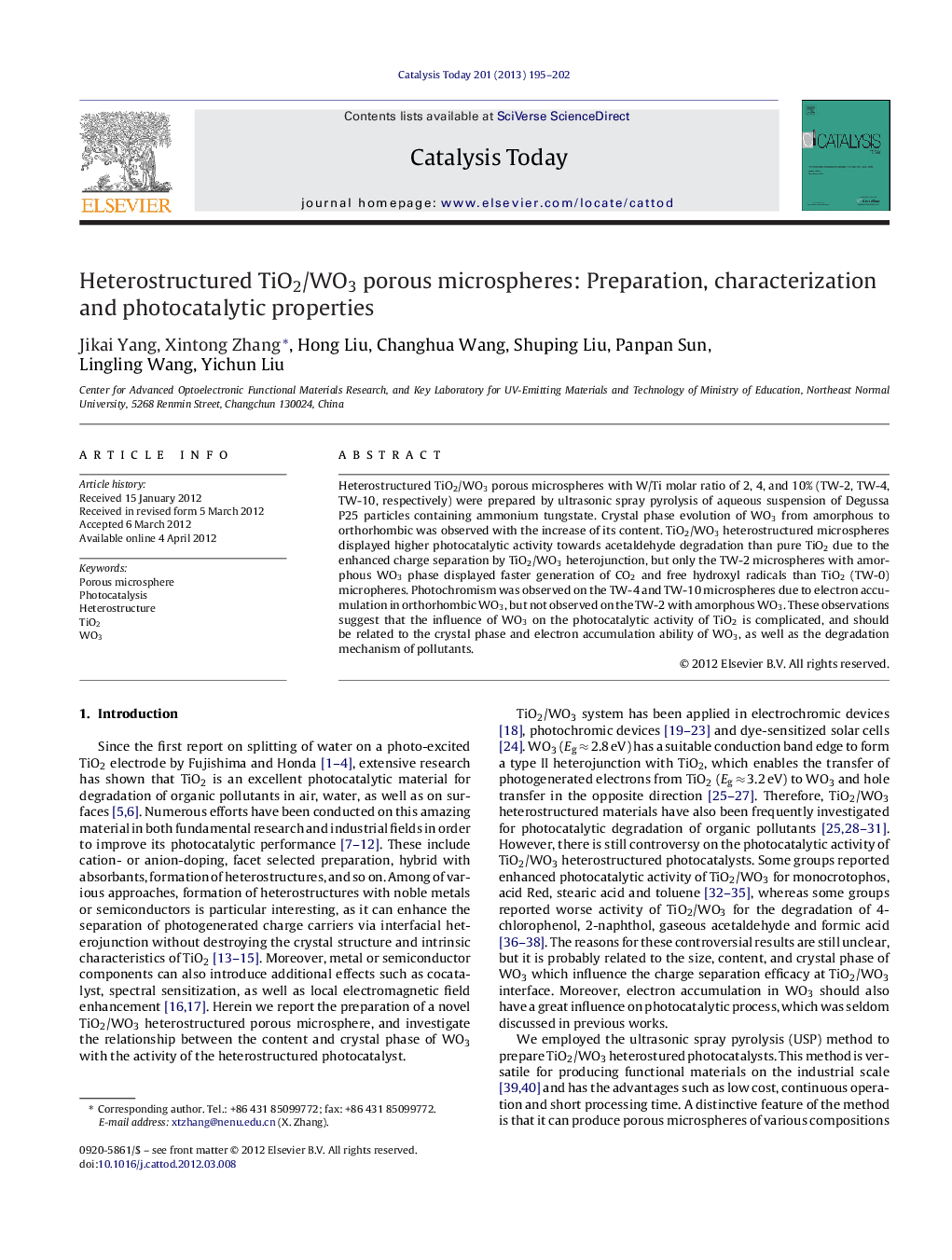| Article ID | Journal | Published Year | Pages | File Type |
|---|---|---|---|---|
| 55117 | Catalysis Today | 2013 | 8 Pages |
Heterostructured TiO2/WO3 porous microspheres with W/Ti molar ratio of 2, 4, and 10% (TW-2, TW-4, TW-10, respectively) were prepared by ultrasonic spray pyrolysis of aqueous suspension of Degussa P25 particles containing ammonium tungstate. Crystal phase evolution of WO3 from amorphous to orthorhombic was observed with the increase of its content. TiO2/WO3 heterostructured microspheres displayed higher photocatalytic activity towards acetaldehyde degradation than pure TiO2 due to the enhanced charge separation by TiO2/WO3 heterojunction, but only the TW-2 microspheres with amorphous WO3 phase displayed faster generation of CO2 and free hydroxyl radicals than TiO2 (TW-0) micropheres. Photochromism was observed on the TW-4 and TW-10 microspheres due to electron accumulation in orthorhombic WO3, but not observed on the TW-2 with amorphous WO3. These observations suggest that the influence of WO3 on the photocatalytic activity of TiO2 is complicated, and should be related to the crystal phase and electron accumulation ability of WO3, as well as the degradation mechanism of pollutants.
Graphical abstractFigure optionsDownload full-size imageDownload high-quality image (178 K)Download as PowerPoint slideHighlights► TiO2/WO3 composite microspheres were prepared by ultrasonic spray pyrolysis method. ► Crystal phase evolution of WO3 from amorphous to orthorhombic was observed with the increase of its content. ► TiO2–2% WO3 showed higher activity than TiO2 in CO2 production and acetaldehyde degradation. ► Electron storage in WO3 had detrimental effect to the complete mineralization of acetaldehyde.
